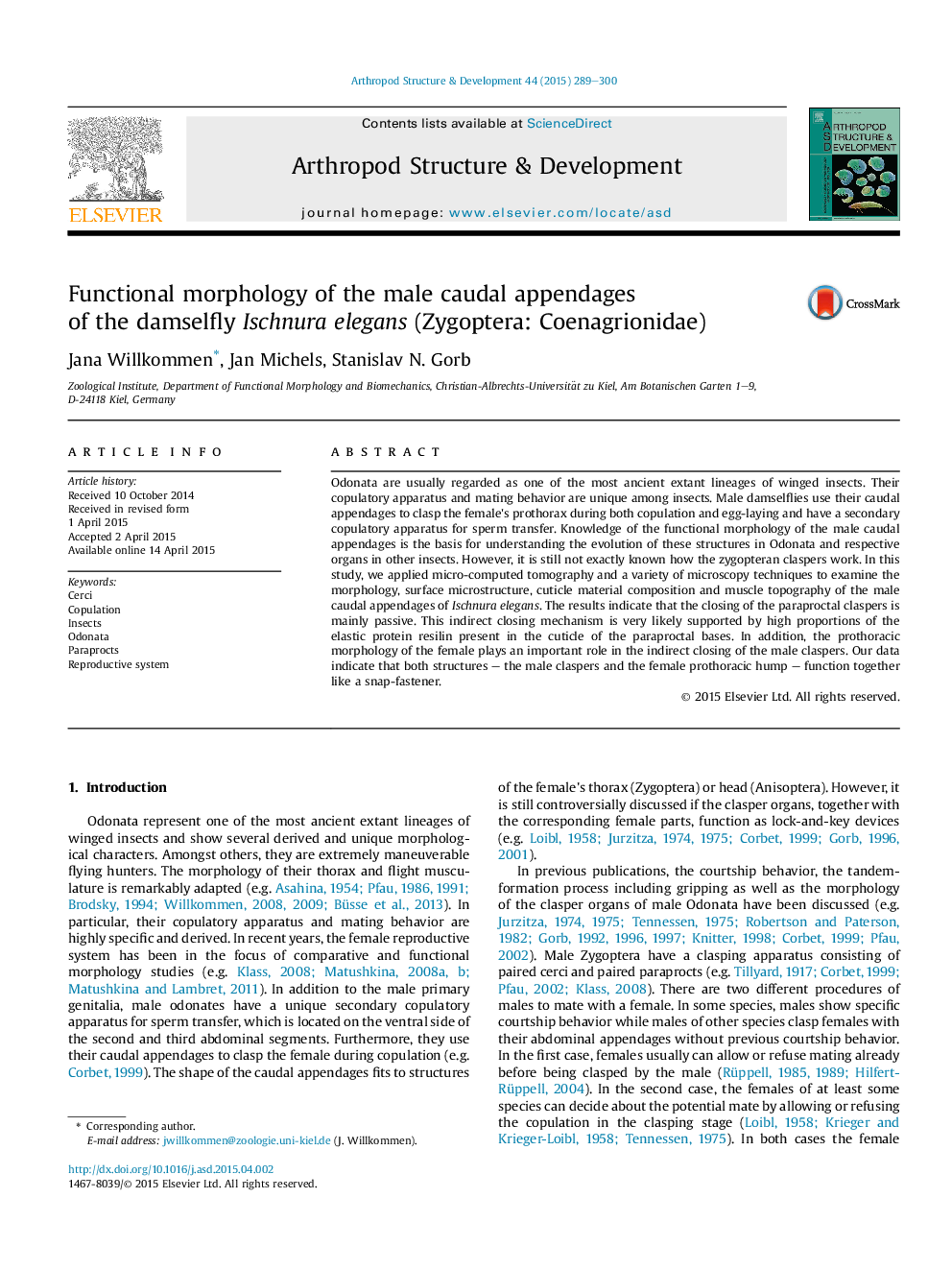| Article ID | Journal | Published Year | Pages | File Type |
|---|---|---|---|---|
| 5888687 | Arthropod Structure & Development | 2015 | 12 Pages |
Abstract
Odonata are usually regarded as one of the most ancient extant lineages of winged insects. Their copulatory apparatus and mating behavior are unique among insects. Male damselflies use their caudal appendages to clasp the female's prothorax during both copulation and egg-laying and have a secondary copulatory apparatus for sperm transfer. Knowledge of the functional morphology of the male caudal appendages is the basis for understanding the evolution of these structures in Odonata and respective organs in other insects. However, it is still not exactly known how the zygopteran claspers work. In this study, we applied micro-computed tomography and a variety of microscopy techniques to examine the morphology, surface microstructure, cuticle material composition and muscle topography of the male caudal appendages of Ischnura elegans. The results indicate that the closing of the paraproctal claspers is mainly passive. This indirect closing mechanism is very likely supported by high proportions of the elastic protein resilin present in the cuticle of the paraproctal bases. In addition, the prothoracic morphology of the female plays an important role in the indirect closing of the male claspers. Our data indicate that both structures - the male claspers and the female prothoracic hump - function together like a snap-fastener.
Related Topics
Life Sciences
Agricultural and Biological Sciences
Insect Science
Authors
Jana Willkommen, Jan Michels, Stanislav N. Gorb,
